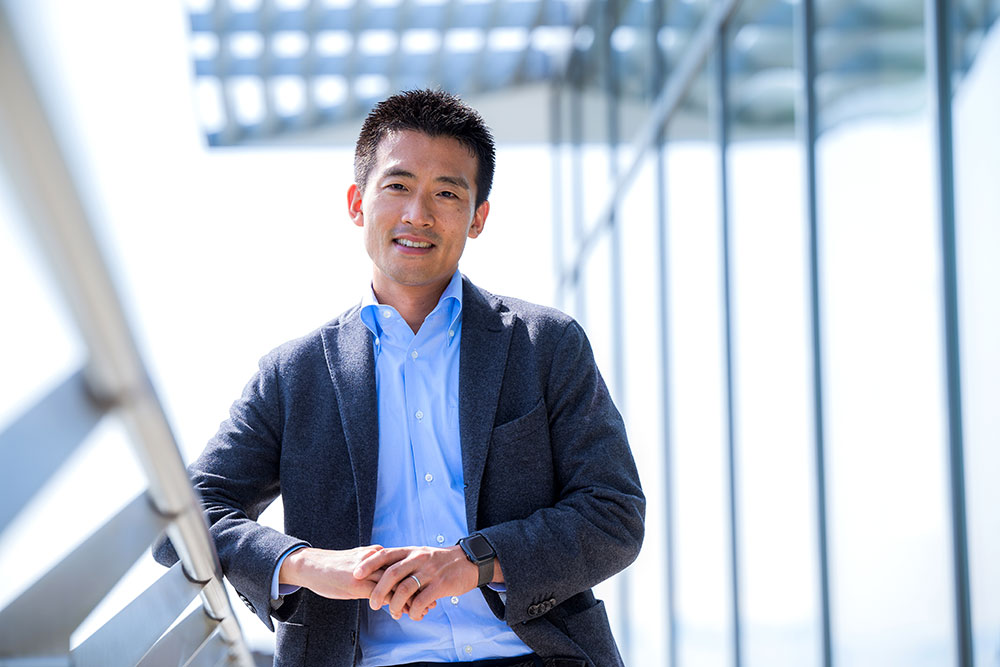Masashi Hirose: Democratizing access to quantum

Masashi Hirose was a high-schooler in Nagoya, Japan, when he first picked up a book about quantum physics. Most of the scientific phenomena he knew about until then seemed to have been studied thoroughly and were well-established entities. But quantum, with concepts like wave-particle dualities, captured Hirose’s imagination. To the teenager, the field felt more esoteric.
Little did Hirose realize that the beginnings of an interest fueled by the “strange” field would lead him to launch NanoQT, Japan’s first quantum hardware-focused startup, fueling dreams of developing critical components for a quantum-based internet.
An early start in quantum
After high school in Nagoya, Hirose followed his passion and pursued an undergraduate degree in applied physics at Keio University in Tokyo.
It was here that Hirose discovered that the subject he loved was on the cusp of many practical applications, including quantum computing. He made a practical decision: “I realized that quantum engineering with which I could build something tangible leading to societal impact, is the best arena I could work on,” he says.
A professor who taught about quantum computers suggested Hirose pursue further studies at MIT. As luck would have it, Professor Paola Cappellaro was launching a lab at MIT-NSE, researching the very topics that had galvanized Hirose’s interest. Hirose visited Cappellaro at MIT and was excited about the prospect of being a part of her early team. He joined the lab in 2009.
Exploring quantum sensing
The foundation of Hirose’s doctoral work was quantum sensing, a technique to measure the slightest variations in magnetic fields with high resolution. Such measurements are especially useful in measuring biological activities such as neuron activity.
In performing its function, quantum sensing must contend with a tradeoff: In order to retain its properties, a quantum system must be decoupled from the external world as much as possible; it should not lose coherence. At the same time, if you want a strong sensor, the system needs to be sensitive to one specific external signal. Hirose’s research focused on researching this tradeoff—on maintaining “quantumness,” while being sensitive to a specific signal in a range of frequencies or amplitude.
Hirose used the Nitrogen Vacancy Center (NV center) in diamond as a sensor platform for his experiments. A very special defect in the diamond lattice, which attracts isolated electrons, can be exploited for sensing purposes. His doctoral research focused on exploiting the electronic spin of NV centers to control the spin of nearby atomic nuclei and thereby stabilizing them or increasing coherence. Such coherent feedback control was a significant contribution to the field of quantum sensing.
Test-driving work in industry
After completing his PhD in 2015, Hirose was ready to explore “different working experiments and professional dynamics.” It led him to work as a business consultant for global management consulting firm McKinsey in Tokyo, helping with strategy development and operations improvement for global companies in manufacturing, automotive and the financial sectors.
Having gained valuable experience in academia, Hirose added to his knowledge by glimpsing the inner workings of companies. “I also appreciate that McKinsey showed me how to work as a team with members from different backgrounds,” he says.
The team management techniques he learned at McKinsey helps Hirose today as co-founder and CEO of NanoQT, a startup focused on developing quantum hardware.
A different approach to quantum hardware
Buoyed by a $10 million seed round from U.S. and Japanese venture capitalists, NanoQT is working on quantum computers based on a principle of Cavity QED (quantum electrodynamics).
Launched in 2022, NanoQT is betting on a hybrid system of neutral atoms and photons. Photons are very critical in developing a quantum network but it’s very difficult to stop them, Hirose says. Neutral atoms get the job done: They store and operate information captured from photons. A cavity QED is the most efficient system that facilitates such atom-photon interactions.
NanoQT uses nanofiber to make a cavity QED. “The beauty of this system is that the cavity is seamlessly integrated with the optical fibers,” Hirose says. Such integration enables efficient dispatch of photons into the fiber and delivers a modular quantum computing structural unit.
Among its many selling points, the startup’s biggest promise is that of scalability. It does so by increasing the number of qubits (the quantum computing unit) in the computer and by developing a network of quantum computers connected by optical fibers.
Quantum computing might be the next big thing in computing but its sensitivity to environmental stimuli is a significant obstacle to scalability. For quantum information to travel long distances, we need a device called a quantum repeater, which absorbs information in the form of photons and relays it on to the next unit. The premise is that because NanoQT’s computers will be optic fiber-connectable, they can serve as an effective highway for photon transfer.
A quantum future
The immediate goal at the startup, which has a staff of six, is a working proof-of-concept on the way to a viable commercial product of quantum repeaters.
Hirose believes he has come full circle since his days at MIT and is grateful for the research he could conduct here.
Hirose is expanding his Rolodex of U.S. connections — the biggest sponsor and end user of quantum technologies is the U.S. government, he says — and looking for global talent to realize the startup’s grand visions.
Hirose and his co-founders want to make quantum computers more secure, powerful, and accessible to customers. “Right now, quantum computers sit somewhere in the world in a closed condition with only a few companies using it but an end-to-end secure quantum protocol through a network can change everything,” Hirose says. “We want to democratize access to quantum.”
VIDEO: Revolutionizing computing through a network of quantum computers
Written by Poornima Apte. Photo by Gretchen Ertl. Video by Aaron Hwang
January 2024
